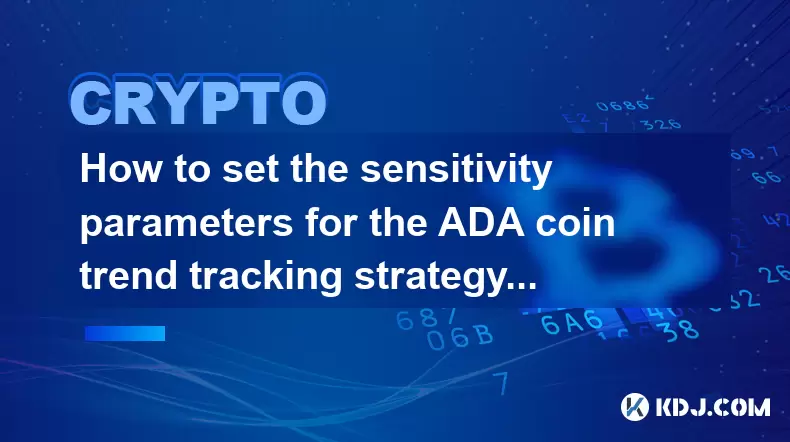-
 Bitcoin
Bitcoin $119600
0.45% -
 Ethereum
Ethereum $4671
8.16% -
 XRP
XRP $3.250
2.78% -
 Tether USDt
Tether USDt $0.9999
0.01% -
 BNB
BNB $838.0
3.17% -
 Solana
Solana $198.5
12.77% -
 USDC
USDC $0.9997
-0.01% -
 Dogecoin
Dogecoin $0.2396
6.18% -
 TRON
TRON $0.3547
2.21% -
 Cardano
Cardano $0.8583
9.20% -
 Chainlink
Chainlink $24.42
13.29% -
 Hyperliquid
Hyperliquid $44.08
1.42% -
 Stellar
Stellar $0.4492
2.37% -
 Sui
Sui $3.915
6.09% -
 Bitcoin Cash
Bitcoin Cash $612.9
3.02% -
 Hedera
Hedera $0.2627
5.34% -
 Ethena USDe
Ethena USDe $1.000
-0.03% -
 Avalanche
Avalanche $24.94
7.83% -
 Litecoin
Litecoin $132.6
10.48% -
 Toncoin
Toncoin $3.439
1.39% -
 UNUS SED LEO
UNUS SED LEO $9.212
2.34% -
 Shiba Inu
Shiba Inu $0.00001371
4.89% -
 Uniswap
Uniswap $11.54
1.13% -
 Polkadot
Polkadot $4.211
7.67% -
 Dai
Dai $0.9998
-0.03% -
 Cronos
Cronos $0.1649
-1.62% -
 Ethena
Ethena $0.7975
-1.46% -
 Pepe
Pepe $0.00001235
9.15% -
 Bitget Token
Bitget Token $4.445
0.46% -
 Aave
Aave $323.7
8.18%
How to set the sensitivity parameters for the ADA coin trend tracking strategy?
For ADA, set short-term moving averages at 5-20 days and long-term at 50-200 days, with 2% thresholds for buy/sell signals to balance sensitivity and reliability.
May 19, 2025 at 01:56 pm

Introduction to ADA Coin Trend Tracking
Setting up a trend tracking strategy for Cardano (ADA) requires a deep understanding of market dynamics and the specific parameters that can affect the sensitivity of your tracking system. The goal is to fine-tune your strategy to react appropriately to market movements, ensuring you capitalize on trends while minimizing false signals. This article will guide you through the process of setting sensitivity parameters for an ADA coin trend tracking strategy.
Understanding Sensitivity Parameters
Sensitivity parameters in a trend tracking strategy determine how quickly your system reacts to price changes. These parameters include moving average periods, threshold levels, and other indicators that help define what constitutes a trend. For ADA, setting these parameters correctly can mean the difference between catching a profitable trend early and reacting too late or too aggressively to market noise.
Choosing the Right Moving Average Periods
Moving averages are fundamental to trend tracking strategies. For ADA, you might consider using a combination of short-term and long-term moving averages to identify trends. Here's how you can set these:
- Short-term moving average: Choose a period between 5 to 20 days. A shorter period, like 5 days, will make your strategy more sensitive to price changes, potentially catching trends earlier but also increasing the risk of false signals.
- Long-term moving average: Opt for a period between 50 to 200 days. A longer period, such as 200 days, will provide a smoother trend line, helping to filter out short-term fluctuations and focus on more significant trends.
Setting Threshold Levels
Threshold levels determine when your strategy should trigger a buy or sell signal based on the deviation between the short-term and long-term moving averages. Here's how to set these thresholds for ADA:
- Buy signal threshold: Set this when the short-term moving average crosses above the long-term moving average by a certain percentage, typically between 1% to 3%. For ADA, starting with a 2% threshold can balance sensitivity and reliability.
- Sell signal threshold: Conversely, set this when the short-term moving average falls below the long-term moving average by a similar percentage. A 2% threshold can be a good starting point.
Incorporating Additional Indicators
Additional indicators can enhance the sensitivity and accuracy of your ADA trend tracking strategy. Consider the following:
- Relative Strength Index (RSI): Set an RSI threshold between 70 (overbought) and 30 (oversold). For ADA, you might set a buy signal when the RSI falls below 30 and a sell signal when it rises above 70.
- Bollinger Bands: Use these to gauge volatility. Set the standard deviation to 2, and consider a buy signal when the price touches the lower band and a sell signal when it touches the upper band.
Implementing the Strategy
Implementing your ADA trend tracking strategy involves setting up these parameters in your trading platform or software. Here's a step-by-step guide:
- Select your trading platform: Ensure it supports custom indicators and strategy backtesting.
- Input moving average periods: Enter the short-term and long-term periods you've chosen.
- Set threshold levels: Input the buy and sell signal thresholds based on the moving average crossover.
- Add additional indicators: Configure RSI and Bollinger Bands with the specified thresholds.
- Backtest the strategy: Use historical ADA data to test how your strategy would have performed. Adjust the sensitivity parameters based on the backtest results to optimize performance.
Fine-Tuning Your Strategy
Fine-tuning your ADA trend tracking strategy involves continuous monitoring and adjustment of the sensitivity parameters. Here are some tips:
- Monitor market conditions: ADA's market can be influenced by broader crypto trends, regulatory news, and technological developments. Adjust your sensitivity parameters based on these factors.
- Analyze performance: Regularly review the performance of your strategy. If you're experiencing too many false signals, consider increasing your thresholds or lengthening your moving average periods.
- Stay informed: Keep up with ADA-specific news and updates, as these can impact the effectiveness of your strategy.
Frequently Asked Questions
Q: Can I use the same sensitivity parameters for other cryptocurrencies?
A: While the principles of setting sensitivity parameters are similar across cryptocurrencies, each coin has unique market dynamics. For instance, Bitcoin might require different moving average periods and thresholds compared to ADA due to its higher liquidity and market influence. It's essential to tailor your strategy to the specific characteristics of each cryptocurrency.
Q: How often should I adjust my sensitivity parameters?
A: The frequency of adjustments depends on market volatility and the performance of your strategy. In highly volatile markets, you might need to adjust your parameters weekly or even daily. In more stable conditions, monthly adjustments might suffice. Always base your adjustments on performance data and market analysis.
Q: What are the risks of setting too high sensitivity parameters for ADA?
A: Setting too high sensitivity parameters can lead to over-trading and increased transaction costs. It may also result in reacting to short-term market noise rather than genuine trends, leading to potential losses. Balancing sensitivity with reliability is crucial to avoid these risks.
Q: Is it possible to automate the adjustment of sensitivity parameters?
A: Yes, some advanced trading platforms and software allow for automated adjustment of sensitivity parameters based on predefined rules or machine learning algorithms. However, it's important to monitor these automated systems closely to ensure they align with your trading goals and market conditions.
Disclaimer:info@kdj.com
The information provided is not trading advice. kdj.com does not assume any responsibility for any investments made based on the information provided in this article. Cryptocurrencies are highly volatile and it is highly recommended that you invest with caution after thorough research!
If you believe that the content used on this website infringes your copyright, please contact us immediately (info@kdj.com) and we will delete it promptly.
- Meme Coins: Chasing the 2025 Surge – Which Will Moonshot?
- 2025-08-13 10:25:23
- Bitcoin's Wild Ride: Rally, Pullback, and What's Next
- 2025-08-13 10:25:23
- Bitcoin, Bitmax, and Institutional Demand: A New Era of Crypto Investment
- 2025-08-13 10:45:12
- Solana, ROAM, and Airdrops: What's the Buzz in 2025?
- 2025-08-13 11:35:13
- Riding the Crypto Wave: NFTs, DeFi, and the Market's $4.2T High
- 2025-08-13 11:35:13
- Cold Wallet: Cashback, Crypto, and Cutting Gas Fees Like a Boss
- 2025-08-13 11:45:17
Related knowledge

How to purchase Aragon (ANT)?
Aug 09,2025 at 11:56pm
Understanding Aragon (ANT) and Its PurposeAragon (ANT) is a decentralized governance token that powers the Aragon Network, a platform built on the Eth...

Where to trade Band Protocol (BAND)?
Aug 10,2025 at 11:36pm
Understanding the Role of Private Keys in Cryptocurrency WalletsIn the world of cryptocurrency, a private key is one of the most critical components o...

What is the most secure way to buy Ocean Protocol (OCEAN)?
Aug 10,2025 at 01:01pm
Understanding Ocean Protocol (OCEAN) and Its EcosystemOcean Protocol (OCEAN) is a decentralized data exchange platform built on blockchain technology,...

How to invest in Kyber Network Crystal v2 (KNC)?
Aug 12,2025 at 05:21pm
Understanding Kyber Network Crystal v2 (KNC)Kyber Network is a decentralized liquidity hub built on the Ethereum blockchain that enables instant token...

Where can I buy UMA (UMA)?
Aug 07,2025 at 06:42pm
Understanding UMA and Its Role in Decentralized FinanceUMA (Universal Market Access) is an Ethereum-based decentralized finance (DeFi) protocol design...

How to sell my Ren (REN) tokens?
Aug 13,2025 at 11:35am
Understanding REN Tokens and Their Role in Decentralized FinanceREN is an ERC-20 token that powers the Ren protocol, a decentralized interoperability ...

How to purchase Aragon (ANT)?
Aug 09,2025 at 11:56pm
Understanding Aragon (ANT) and Its PurposeAragon (ANT) is a decentralized governance token that powers the Aragon Network, a platform built on the Eth...

Where to trade Band Protocol (BAND)?
Aug 10,2025 at 11:36pm
Understanding the Role of Private Keys in Cryptocurrency WalletsIn the world of cryptocurrency, a private key is one of the most critical components o...

What is the most secure way to buy Ocean Protocol (OCEAN)?
Aug 10,2025 at 01:01pm
Understanding Ocean Protocol (OCEAN) and Its EcosystemOcean Protocol (OCEAN) is a decentralized data exchange platform built on blockchain technology,...

How to invest in Kyber Network Crystal v2 (KNC)?
Aug 12,2025 at 05:21pm
Understanding Kyber Network Crystal v2 (KNC)Kyber Network is a decentralized liquidity hub built on the Ethereum blockchain that enables instant token...

Where can I buy UMA (UMA)?
Aug 07,2025 at 06:42pm
Understanding UMA and Its Role in Decentralized FinanceUMA (Universal Market Access) is an Ethereum-based decentralized finance (DeFi) protocol design...

How to sell my Ren (REN) tokens?
Aug 13,2025 at 11:35am
Understanding REN Tokens and Their Role in Decentralized FinanceREN is an ERC-20 token that powers the Ren protocol, a decentralized interoperability ...
See all articles

























































































